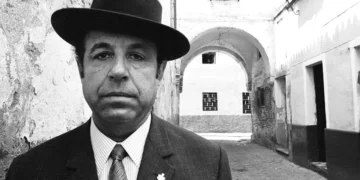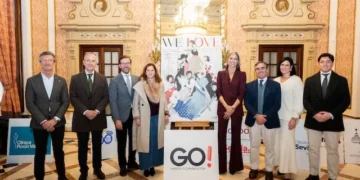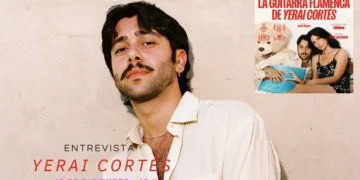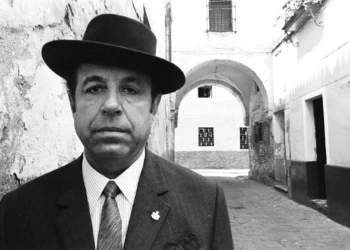|
Dance: Angelita Gómez, María
del Mar Moreno, Pepa Montes. Cante: Melchora Ortega,
Fernando Terremoto, Antonio Malena, Luis Moneo, Luis de Pacote,
Segundo Falcón, Enrique Soto. Guitar: Domingo
Rubichi, Santiago Moreno, Ricardo Miño, Pascual de Lorca.
Piano: Pedro Ricardo Miño. Percussion:
Antonio Barrul. Palmas: Bobote, El Eléctrico.
If the Festival de Jerez opened with the town’s most
popular dancer, Antonio el Pipa, the closing night was equally Jerez-oriented:
a sentimental journey and tribute to dance teacher Angelita Gómez,
an institution in Jerez.
Throughout the festival Angelita, who turns 60 this year and has
been teaching for decades in her own studio, offered her workshop
of bulería de Jerez. The chance to see the person responsible
for forming stars like María del Mar Moreno, María
José Franco or Pipa himself, perform on stage, was an interesting
proposition in itself although, as the maestra said in her press
conference, “dancing on stage isn’t the same thing as
teaching”.
But we hadn’t come to criticize, but rather to support and
encourage the teacher and all the people she had chosen to surround
herself with for sentimental reasons, such as Fernando Terremoto,
María del Mar Moreno, Pepa Montes or Melchora Ortega among
others.
The chance to see the
person responsible
for forming stars like María del Mar Moreno,
María José Franco or Pipa himself, perform on stage
One of the most interesting numbers was the first, a polo, danced
by Angelita and sung by Melchora Ortega whose dynamic youthful voice
lent new life to this rarely heard, and even more rarely danced
form. Looks like it’s official, nearly forgotten forms of
the flamenco repertoire are being recuperated after falling into
disuse starting around the nineteen-eighties when everything turned
into a variation on soleá por bulería. The ingenious
placement of mirrors fueled the nostalgic feeling and added light
and dimension.
After a dance by María del Mar Moreno, and corridos by Luis
de Pacote and Luis Moneo, Ricardo Miño, his wife, dancer
Pepa Montes and their son pianist Pedro Ricardo Miño offered
a long recital within a recital that started off well with Pepa’s
alegrías, but overstayed it’s welcome with a piano
solo and some tangos that ended the first part.

‘romance’ danced by Angelita and María del Mar
represented the passing of the torch, from one generation to the
next, by means of a long red ruffle that María pulled from
Angelita’s dress, an unfortunate contrivance. The audiovisual
touch that brought images of water and of Angelita as a young girl
managed to avoid being cloying and added interest.
Melchora Ortega returned to offer her lovely tientos wrapped up
with a touch of zambra inspired in Caracol, and it was impossible
not to recall Terremoto senior when his son Fernando came out to
sing for Angelita’s siguiriya that led to a fiesta finale
in which all the artists participated including the group from the
peña Fernando Terremoto.
Melchora Ortega
Text : Estela
Zatania
|
|
Theater
Villamarta Program
De Peña
en Peña Program: Trasnoches,
De Peñas, Peña de Guardia
Other
shows(Gloria Pura, Bordón
y cuenta nueva, De la Frontera, Café Cantante, Sólos
en Compañía)
Courses
and workshops























